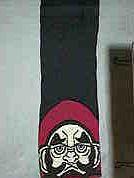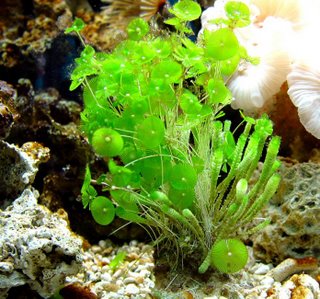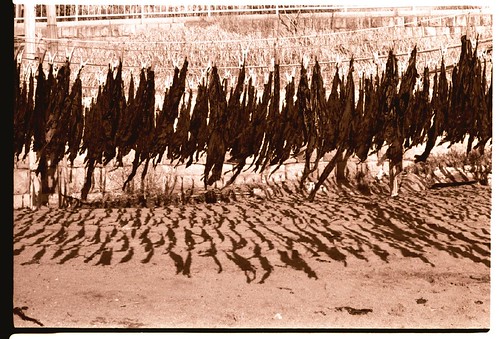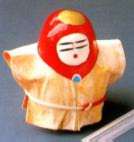[ . BACK to Worldkigo TOP . ]
:::::::::::::::::::::::::::::::::::::::::::::::::::::::::::::::::::::::::::::::::::::::::::::::::::::
Coins (kozeni, zeni) and money
***** Location: Japan, worldwide
***** Season: Non-seasonal Topic
***** Category: Humanity
*****************************
Explanation
Money we use to pay our way around in the modern world.
zeni, kozeni 銭、小銭
kooka, tama, koin 硬貨、たま、コイン
tsuri 釣り change
Other Keywords in this category:
money, okane お金
paper money 、o-satsu お札
:::::::::::::::::::::::::::::::::::::::::::::::::::::::::::::::::::::::::::::::::::::::::::::::::::::
Coins with a hole in Japan
By ALICE GORDENKER
© Japan Times, June 2006
Question:
I never saw a coin with a hole in the middle of it until I came to Japan, so I'm totally fascinated by the 5-yen and 50-yen coins. I even send them as gifts to friends back home, sometimes strung on chains as jewelry. However, no one I've met has been able to explain to me why those holes are there. What the heck is the story on Japan's holey coins?
 Answer:
Answer:
I gather you're not from Papua New Guinea, Denmark or the Philippines, among the few nations other than Japan that still have coins with holes in the center. There used to be more because coins with holes were harder to counterfeit and cheaper to make (because you don't need as much metal for a coin with a hole). But with improvements in minting technology, many countries decided that the cost of producing the hole outweighed the advantages.
Fortunately for you and other aficionados of center-free coins, Japan has no plans to eliminate the holes in the 5- and 50-yen coins, according to an official at the Bank of Japan. The main rationale for keeping them, he said, is that the holes make it easy to distinguish those coins from others, particularly for people with visual impairments. That's a good reason, but I do wonder if Japanese are simply attached to the idea of coins with holes. After all, they've had them for a very long time. Round about 1,300 years, in fact.
I have to tread carefully here because there's some controversy about which was the first coin minted in Japan. Some scholars will tell you it's the Wado Kaichin, a copper coin generally dated to 708, while others will put their money solidly on the Fuhonsen, a bronze coin made earlier but not widely circulated. For the purposes of this discussion, it's enough for us to know that both of these early Japanese coins had holes. But the holes were square and served a very specific purpose.
Like Chinese coins of that period, on which they were surely modeled, the earliest coins in Japan were round and about 2.5 cm in diameter (roughly the size of today's 500-yen coin). There were produced, about a hundred at a time, in a mold with parallel troughs that funneled molten metal into the round sections that formed the coins. When the metal cooled, you had what looked like a money tree. The coins had to be broken off from the branches, leaving you with a rough stub, which (should you have a need to wow someone with your command of exceedingly obscure vocabulary) is called an
ibari.
Removing the stubs would be a lot of work if you had to file each coin one by one, but some clever person figured out that if you made the coins with square holes, you could skewer a whole line of them onto a square stick to hold them in place while you filed them all together.
Over the following centuries, Japanese coins were made in all sorts of shapes and sizes, including the enormous
Tensho Oban, a gold oval first minted in 1588 that weighs in at 165 grams that's as heavy as 34 of today's 100-yen coins, by my kitchen scale. The Oban was a solid coin, but through most of Japan's history, at least some of the coins in use had holes. In the Tokugawa Period, there was a holed coin that merchants would string together for convenience and a financial premium. A bundle of 96 traded for the same value as 100 loose.
The first modern Japanese coin made with a hole was the 5-sen coin, released in 1917. (Until 1954, the yen was divided into 100 sen). The brass 5-yen coin you probably have in your pocket was first minted in 1959, while the current 50-yen coin, made from an alloy called cupronickel, has been around since 1967. There was an earlier all-nickel version, first issued in 1959 and still accepted today, but now rarely seen.
Say, wouldn't those make neat Christmas presents, if you can get a hole ... excuse me, a hold of them?
The Japan Times, © All rights reserved
:::::::::::::::::::::::::::::::::::::::::::::::::::::::::::::::::::::::::::::::::::::::::::::::::::::
 zenisashi, zeni-sashi 銭さし / 銭差/銭緡
zenisashi, zeni-sashi 銭さし / 銭差/銭緡
sashi-uri 繦売り
string to keep the small coins
a string of cash with 100 coins (or 96 coins and four for a money dealer)
In Edo many people were craftsmen and only a few of them were rich enough to keep a lot of money at home.
The strings were made of twisted straw and were sold by hawkers.
zenisashi uri 銭緡売り
vendor of money strings
Some were quite vicious and hang around shops and stores to "force" their owners to buy the string. A lot of senryu have been written about them.
いらぬさし買って酒屋はしずかなり
iranu sashi katte sakaya wa shizuka nari
he bought money strings
that were not needed, now the sake shop
is all quiet
He had to keep them in the second floor of his shop and could not accomodate any customers there for a while.
.......................................................................
---
Another business in Edo
zenigoza uri 銭蓙売り vendor of mats to place coins
They were made of waste paper 反故紙 (hogogami) in the size of the amount of coins that should be placed on it. Most were made by the
ashigaru servants of samurai to make a bit of extra pocket money, not as a full-time job.
It was sold to
money changer shops 両替店.
hago 銭筥(はこ)
Money at the shops was never placed directly on the tatami or wooden floor.
Coins were also placed on these mats before putting a string (zeni-sashi 銭さし) through their middle hole in shops that handled a lot of coin money.
 source : tokyosigaku.jugem.jp
. kami 紙 paper recycling in Edo .
source : tokyosigaku.jugem.jp
. kami 紙 paper recycling in Edo .
.......................................................................
ryoogaeya 両替屋 money changer
Money was in the form of gold and silver slabs and small change
zeni, kozeni 銭、小銭.
The money changers had to weigh the amount of metal to make sure there was no fraud involved.
The exchange rate was fixed by the Bakufu government.
The money changers charged a small sum for their work.

Some dealers for the townspeople were specialized in coins:
銭両替屋
Many shops were concentraded in 室町 Muromachi and 通町 Toricho.
In the year 1718 there were more than 600 people involved in the business.
A few of them were specialized in changing gold and silver :
hon ryoogaeya 本両替屋
Their clients were the feudal lords and the richest of town.
Their most important tools were a set of scales and weight, 分銅 bundoo.


分銅
bundoo
An Edo period money changer’s shop has been reproduced
- source : Bank of Tokyo-Mitsubishi Money Museum -
. Echigoya 越後屋 and Mitsui 三井 .
- - - - - - - - - -
Honryoogaechoo 本両替町 Hon-Ryogae-Cho district
- now
. Edo Hongokuchoo 江戸 本石町 Hongoku district in Edo - Nihonbashi .
In its middle was the 金座
Kinza.
In its North was
Kanefukichoo 金吹町
Kanefukicho,
an area where the money was actually made. Special craftsmen, the
kobanshi 小判師 Koban makers
had their own small factories. The mixing of gold and silver and then pressing it into coins was called
kanefuki.

The child of Kyoto swordmaker Gotoo Yuujoo 後藤祐乗 Goto Yujo (1440 – 1512), 後藤庄三郎
Goto Shosaburo was invited to Edo to make the first Koban. He became controller of the Kinza gold mint.
Another district related to the Koban was
Kinsukechoo 金助町 Kinsukecho
- - - - - - - - - -
. Doing Business in Edo - 江戸の商売 .
. senryu, senryū 川柳 Senryu in Edo .
:::::::::::::::::::::::::::::::::::::::::::::::::::::::::::::::::::::::::::::::::::::::::::::::::::::
goshusen 五銖銭 five SHU coin from China
 source : deadpool-shisui.blogspot.jp
source : deadpool-shisui.blogspot.jp
Daruma holding an old Chinese coin
- quote
Old currency prompted by Tang threat
"In Japan at the time, the new minting of China's Goshusen coins was a well-known fact, and Japanese court people perhaps engraved the kanji on the head side of the coin," ...
- source : www.trussel.com/prehist
. Tanuma Okitsugu 田沼意次 and monetary reforms .
latter half of the 18th century
nanryoonishugin なんりょうにしゅぎん 南鐐二朱銀
Nanryo Nishu Gin
silver coins introduced by Tanuma
nishububan 貮朱之歩判 / nishuban 貮朱判
meiwa nanryoonishugin 明和南鐐二朱銀
:::::::::::::::::::::::::::::::::::::::::::::::::::::::::::::::::::::::::::::::::::::::::::::::::::::
A coin-throwing detective in the Edo period:
Kanda Myoojin and Zenigata Heiji Oyabun .. by Gabi Greve
:::::::::::::::::::::::::::::::::::::::::::::::::::::::::::::::::::::::::::::::::::::::::::::::::::::
ichimon, ichi mon 一文 one Mon. a penny; a farthing
ein Pfennig; ein Heller
一文で厄払けり門の月
ichi mon de yaku harai keri kado no tsuki
he drives out devils
for a penny...
moon at the gate
Kobayashi Issa
Tr. David Lanoue
bita ichimon "bita-ichimon” means “a red cent” or negligible amount of money.
:::::::::::::::::::::::::::::::::::::::::::::::::::::::::::::::::::::::::::::::::::::::::::::::::::::::
 shimonya 四文屋 "Four Mon Shop"
shimonya 四文屋 "Four Mon Shop"
Small shops in Edo where everything cost just one coin, the "Four Mon Coin".
That was the beginning of our 100 Yen Shop, the One Dollar Shop, the One Euro Shop.
Other cheap items in Edo were multiplied with four.
The name is still popular for cheap snack shops.
 source : gallery/tenji
source : gallery/tenji
The four-mon coins are Nr. 10 and 11.
(10) 寛永通宝四文銭 Kanei tsuuhoo
(11) 文久永宝四文銭 Bunkyuu eihoo
 木枯や二十四文の遊女小屋
木枯や二十四文の遊女小屋
kogarashi ya nijuu shimon no yuujogoya
winter wind--
a twenty-four cent
whorehouse
Kobayashi Issa 小林一茶
Charging just 24 mon, the price of about two bowls of rice in Issa's day, the women in the little shack are the lowest grade of prostitute.
Tr. David Lanoue
遊女小屋 -yuujo goya (koya)
yuujo - prostitute, whore, harlot (woman to play with, woman who plays with)
koya - small hut (ko small - ya hut)
.
brothel - 売春宿 baishun yado
baishun is "selling spring"
brothel 女郎屋 jorooya (joroo is prostitute)
.
whorehouse 売春宿(brothel).
.
for
yuujo goya the dict. says
.
下等な私娼が客をとる小屋 a small hut where the streetwalkers, the lowest of prostitutes, take in a visitor

Tsukioka (Taiso) Yoshitoshi (1839-1892)
roaring winter wind
in the straw-mat night huts
of streetwalkers
This hokku is from Issa 's diary in the 10th month (November) of 1819, the year described in Issa's Year of My Life, and it appears near the end of that work as well. Goji-in Field is an empty field with trees lining its borders that lies just beyond one of the inner moats around the shogun's castle in Edo (see the picture at the link below). The Goji-in Temple 護持院 that was originally located there burned down in a big Edo fire in 1717, and after that the shogunate left the area as an open field to serve as a park and act as a firebreak to protect against fires that broke out in the downtown commoner area of the city.
Sex work was legal in Edo in the licensed quarter, called Yoshiwara. However there were numerous "underground" sex workers connected with restaurants, drinking places, inns, shops, theaters, etc. The authorities, except for a few periods of hyper-moralizing, tended to be lenient toward these unlicensed sex workers as long as they kept a low profile, and there were many styles and prices. The lowest-priced of all were streetwalkers, many of whom had no manager but had to pay protection money to the yakuza.
In this hokku Issa shows his respect for the streetwalkers by not using one of the many discriminatory colloquial terms for them ("night hawk" was the least derogatory) and instead using the relatively polite term yuujo, literally "performing woman," plus the price they charge. The term yuujo (遊女) literally means a woman who performs songs and dances, and in the late ancient period they were called asobi, "those who perform music or sing songs." The term goes back to the shamanic performances given by female gods in mythic texts, and it was used by those who performed sacred kagura music and dancing at Shinto shrines. As sex work became more specialized, to "play, perform" came to mean to perform for other people's pleasure. Later, in Issa's time, a different perspective became dominant: the audience became the main focus, and most male customers thought of themselves as playing or amusing themselves with sex workers.
Many female sex workers continued to sing, dance, and compose songs and poems for customers even in Issa's time, but the streetwalkers Issa shows concern for in this hokku have no musical instruments and don't sing for customers, though many of them probably could, since they are mostly women who have become too old to continue working in the licensed quarters or in popular unlicensed places of amusement, where they no doubt learned singing, dancing, and shamisen (Japanese banjo) music. They hide their age with hoods and with towels that partially cover their faces, and they work only in dark stretches of streets. The authorities allow them to work along the edges of Goji-in Field as long as they appear only after sundown and disappear before dawn, so after dark the women arrive and set up flimsy tent-like huts made of straw mats. Presumably they use branches or tie ropes between the trees along the street at the edge of the park in order to support the hanging mats, and they place another mat on the ground as the sleeping place. Then they stand beside the street and try to be inconspicuously conspicuous. Since there is a whole row of these tent-like temporary "huts" along the street by the field, I take Issa to be very worried when he sees the huts flapping or blowing down in the strong wind, providing little or no protection at all on this bitterly cold night. The next hokku in Issa's diary is about the first snow of the winter, so his worry about the health of the streetwalkers in the present hokku seems very real.
Prices of commodities were constantly fluctuating in the Edo period, and there is no one infallible method of converting the value of copper coins in Issa's time into contemporary yen and US dollars, but generally speaking one copper would be worth US 2.5-3 cents. Since the women charge 24 coppers, the total would probably be around US 60 cents. A woman had to pay part of the amount to a manager or to a "protector," so the women lived an impoverished existence. In Issa's time in Edo a bowl of buckwheat noodles cost 16 coppers, and visiting a public bath cost 6-8 coppers. Probably most of the women rent a small room in a tenement house where they can sleep and make up during the day.

Here is an Edo-period view of Goji-in Temple Field. Today the field is covered by streets and buildings.
source : wako226.exblog.jp/
Chris Drake
. Kobayashi Issa 小林一茶 Issa in Edo .
. Oiran, Geisha 芸者,花魁とだるま courtsans .
:::::::::::::::::::::::::::::::::::::::::::::::::::::::::::::::::::::::::::::::::::::::::::::::::::::::::::::::::::::::::::
. juukumonya 十九文店
roadside shop selling everything for 19 mon .
juukumon ya, juukumon no mise
sanjuhachimonya - 38 mon 38文
juusanmonya - 13 mon 13文.
*****************************
Worldwide use
*****************************
Things found on the way
Picture Coins 絵銭 (e zeni) with Fudo Myo-O
sold at temples for good luck


 . Fudo Myo-O / Acala Vidyârâja 不動明王
*****************************
. Fudo Myo-O / Acala Vidyârâja 不動明王
*****************************
HAIKU and SENRYU
just as wonderful
as the expensive garden stone...
azaleas
hyaku ryoo no ishi ni mo makenu tsutsuji kana
.百両の石にもまけぬつつじ哉
by Issa, 1825
Literally, Issa is saying that "not even a stone that costs one hundred ryoo defeats the azaleas. Ryoo is an old Japanese coin. Shinji Ogawa explains,
"The plant, tsutsuji, is normally translated as 'azalea.' In a park, azaleas are maintained as three-foot-high bushes."
My translation of this haiku has been guided by that of Gabi Greve.
Tr. David Lanoue
:::::::::::::::::::::::::::::::::::::::::::::::::::::::::::::::::::::::::::::::::::::::::::::::::::
 秋立つや旅の名残の十セント
秋立つや旅の名残の十セント
aki tatsu ya tabi no nagori no juusento
autumn begins . . .
from the trip remains
a 10-cent coin
Tokoo Tatsuo 都甲龍生
:::::::::::::::::::::::::::::::::::::::::::::::::::::::::::::::::::::::::::::::::::::::::::::::::::
the glint
from a little coin
thrown my way
SANTŌKA (Santooka) 山頭火
:::::::::::::::::::::::::::::::::::::::::::::::::::::::::::::::::::::::::::::::::::::::::::::::::::
 買い初めの釣に新札二三枚
買い初めの釣に新札二三枚
kaizome no tsuri ni shin satsu nisanmai
among the change of the
first shopping of the year
some brand new bills
Yamazaki Atsushi 山崎篤
現代歳時記
. kaizome 買初 (かいぞめ) first buying
:::::::::::::::::::::::::::::::::::::::::::::::::::::::::::::::::::::::::::::::::::::::::::::::::::
metal detecting –
four faces crowd around
a 1990 dime

We were at the beach and were metal detecting with the children. Four of us were all digging for the unknown treasure. When we spotted it, we were all crowded around. The funny thing is that we were all very excited that it was indeed a dime and not a piece of a soda can.
We did gather a crowd. Throughout the afternoon many people came by to see what we'd collected. There was a wedding going nearby. Before the ceremony, the pastor, in his three-piece-suit came over to talk to my husband and look at his treasures (two dimes, two nickles and a penny). Many are intrigued by the game.
Laura Sherman
Florida,USA
*****************************
Related words
*****
WKD: Yellow Rose, yamabuki, flower of Money Color !
The bright yellow has been used to describe the yellow color of gold, especially the gold plates of Japanese money during the Edo period.
"Yamabuki-iro" is the color of gold and bribes.
Names in the Edo Period:
Large pieces of Gold Money, ooban 大判
PHOTOS of Oban (ooban)
Small pieces of Gold Money, koban 小判
PHOTOS of Koban
:::::::::::::::::::::::::::::::::::::::::::::::::::::::::::::::::::::::::::::::::::::::::::::::::::
Lottery (takarakuji) Japan
. Senryoo 千両 1000 ryoo of gold pieces
and the money chests to store them 千両箱
. zeni shakujoo 銭錫杖 "money stick" .
A small "hand stick" 手錫杖 made from bamboo, with a split side.
Some coins with a hole are hung on a thin string. If the stick is shaken, it makes a sound like chari-chari チャリチャリ.
This stick is used when dancing to make an accompaning sound, for example the chobokure dance チョボクレ.
:::::::::::::::::::::::::::::::::::::::::::::::::::::::::::::::::::::::::::::::::::::::::::::::::::::
Ginza 銀座
and Tanuma Okitsugu 田沼意次
(September 11, 1719, Edo, Japan – August 25, 1788, Edo)
© More in the WIKIPEDIA !
Ginza in Edo
is named after the silver-coin mint established there in 1612 during the Edo period.
© More in the WIKIPEDIA !
Kinza (金座)
was the Tokugawa shogunate's officially sanctioned gold monopoly or gold guild (za) which was created in 1595.
© More in the WIKIPEDIA !
see also
Kinzan-bugyō
Ginza - Silver za (monopoly office or guild).
Dōza - Copper za (monopoly office or guild).
Shuza - Cinnabar za (monopoly office or guild)
:::::::::::::::::::::::::::::::::::::::::::::::::::::::::::::::::::::::::::::::::::::::::::::::::::::
. Welcome to Edo 江戸 ! .
[ . BACK to WORLDKIGO . TOP . ]
[ . BACK to DARUMA MUSEUM TOP . ]
:::::::::::::::::::::::::::::::::::::::::::::::::::::::::::::::::::::::::::::::::::::::::::::::::::::












































